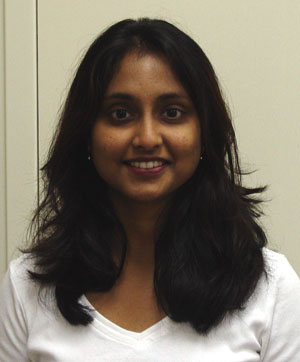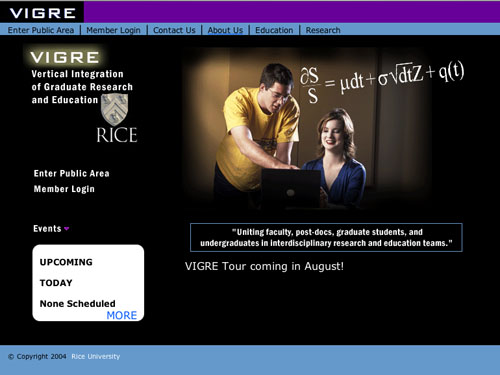Does a PFUG Make Music? |
The
Need for VIGRE On-line Several groups in the Rice VIGRE Program are working on similar themes (such as problems in gene networks, biochemical networks, and statistical genomics) and are likely to learn from one another and “leapfrog” in their problem solving. However, interest across groups was at first impeded by lack of a central communication source and immediate opportunities to see what other groups are doing. Because participants in a group are from various levels and different majors and departments, a group as a whole cannot be assembled frequently to ask questions, demonstrate their techniques or problems, and engage one another—although interest in doing so is remarkably high. VIGRE participants are especially enthusiastic about their emerging projects and have been eager to try out and play around with one another’s equations and data sets. Moreover, this environment is a valuable laboratory for the Cain Project in Engineering and Professional Communication’s research on communication functions, curricular development, and group dynamics over the course of the VIGRE program. Ramadas is creating an on-line tour to help prospective students learn about how the VIGRE groups work. Students interested in becoming members of a group should contact any of the leaders listed on the website at http://vigre.rice.edu. |
|||
| Ramadas Joins Project | ||||
 Suganya
Ramadas holds a Bachelor’s
in Business Administration and Certifications in Graphic Design and
in Website Development. She has worked with different aspects in the
information technology area, but her greatest creative, personal satisfaction
lies in website design and development, her main challenge in the VIGRE
ON-LINE project. Suganya
Ramadas holds a Bachelor’s
in Business Administration and Certifications in Graphic Design and
in Website Development. She has worked with different aspects in the
information technology area, but her greatest creative, personal satisfaction
lies in website design and development, her main challenge in the VIGRE
ON-LINE project. Having worked on many web design projects, she says she enjoys working with people to create, build, and maintain quality websites that meet the needs of an organization. Over the coming academic year she will work closely with the PFUGs to discover new functions that can be added to the Program site. |
||||
| Cain Project Home>>Newsletters | Fall Newsletter
2004XPage
1 |
Page 3 |
